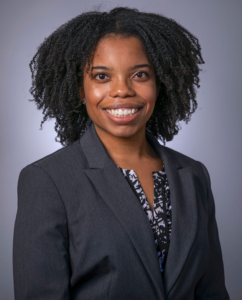VUMC resident Pauleatha Bonds (‘21) shares lessons from the Health Equity Certificate
by Emma Mattson

“I’d been interested in health disparities for a long time, probably even before I knew what the phrase ‘health disparities’ was,” remembers Pauleatha Bonds, MD (VUSM ‘21), a member of the first graduating class in VUSM’s Health Equity Certificate and current dermatology resident at VUMC.
Created by Senior Associate Dean for Health Equity and Inclusive Excellence Consuelo Wilkins, the Health Equity Certificate prepares interested medical students for a career in innovative health equity leadership. As soon as Pauleatha Bonds, then an M2, heard about it, she knew it would be perfect for her.
“When I came to medical school, I knew that I was going to focus my efforts and eventually my career on something related to health equity,” Bonds said. “When I found out about this certificate program, it was completely 100% within my interest and my life in the future.”
After taking two foundation courses and two health equity electives for the certificate, Bonds designed her own immersion experience in health equity: a combination of research with Dr. Consuelo Wilkins and work on the Meharry-Vanderbilt Alliance. What’s more, she played a role in curriculum development for the incoming M1s and M2s interested in Health Equity curriculum.
For Bonds, one of the most valuable parts of the certificate was the monthly sessions where the cohort reflected on clinical scenarios related to health equity.
“We all had different situations that we had seen where some aspects of health disparity affected a patient’s care or the way a patient navigated through the health care system,” Bonds reflected. “It was really nice having a setting where you could reflect and unpack things with like-minded individuals.”
That experience has changed the way she approaches her dermatology residency at VUMC today, she said.
“One thing that was emphasized in the certificate— and something that I hope to extend to my practice as a resident —is to really take the time to, one, inquire and be curious about what my patients are going through at home or outside of the clinic setting,” Bonds said. “And two, being creative in figuring out how to develop treatment plans that are tailored to the experience of this patient.”
Bonds was one of the 14 members of the certificate’s inaugural class, and she highly recommends it to other medical students.
“If anybody is interested in health disparities or just being a physician who takes social determinants of health into higher regard in their practice, it’s a great option for them to explore,” Bonds said.
